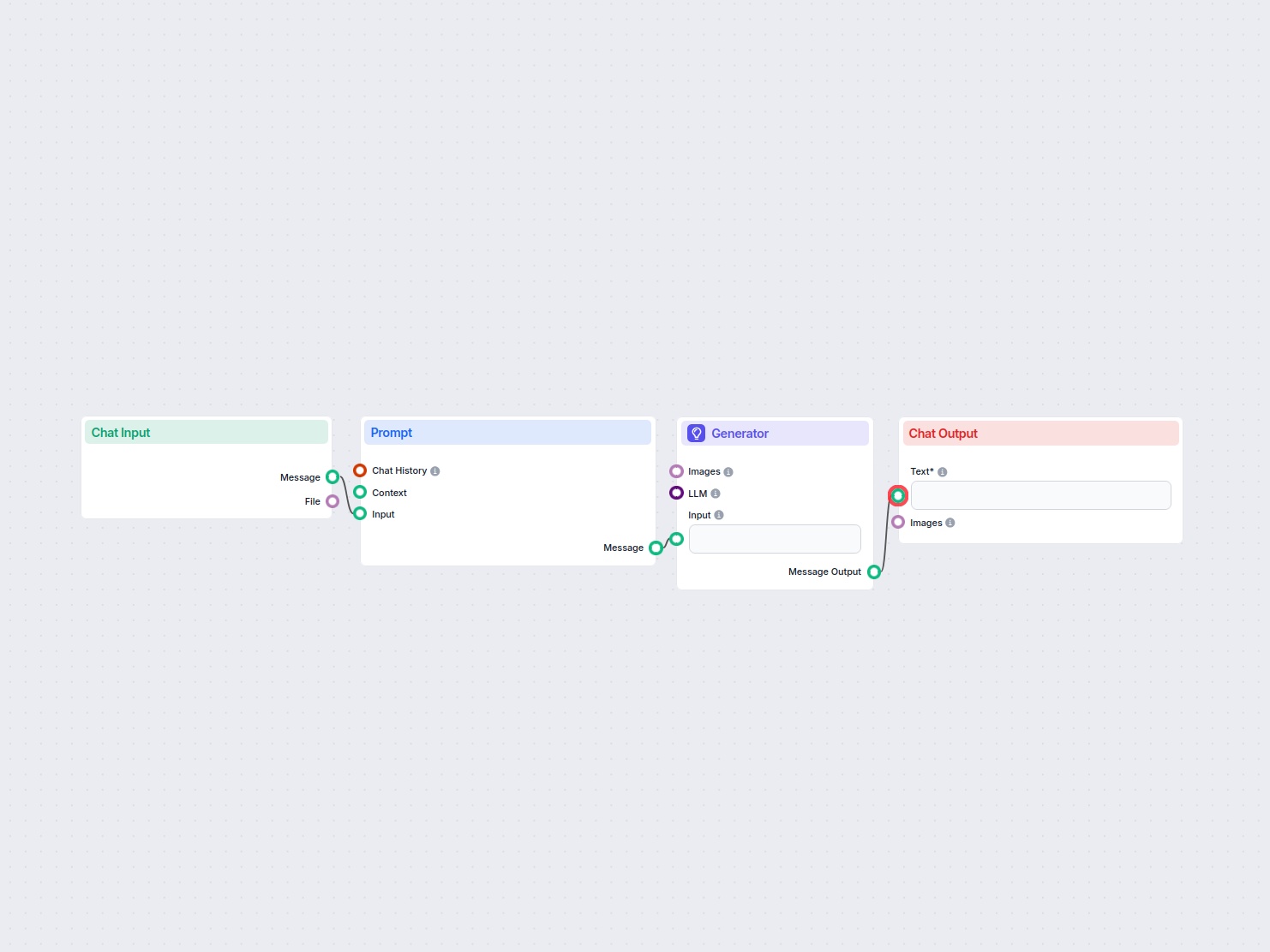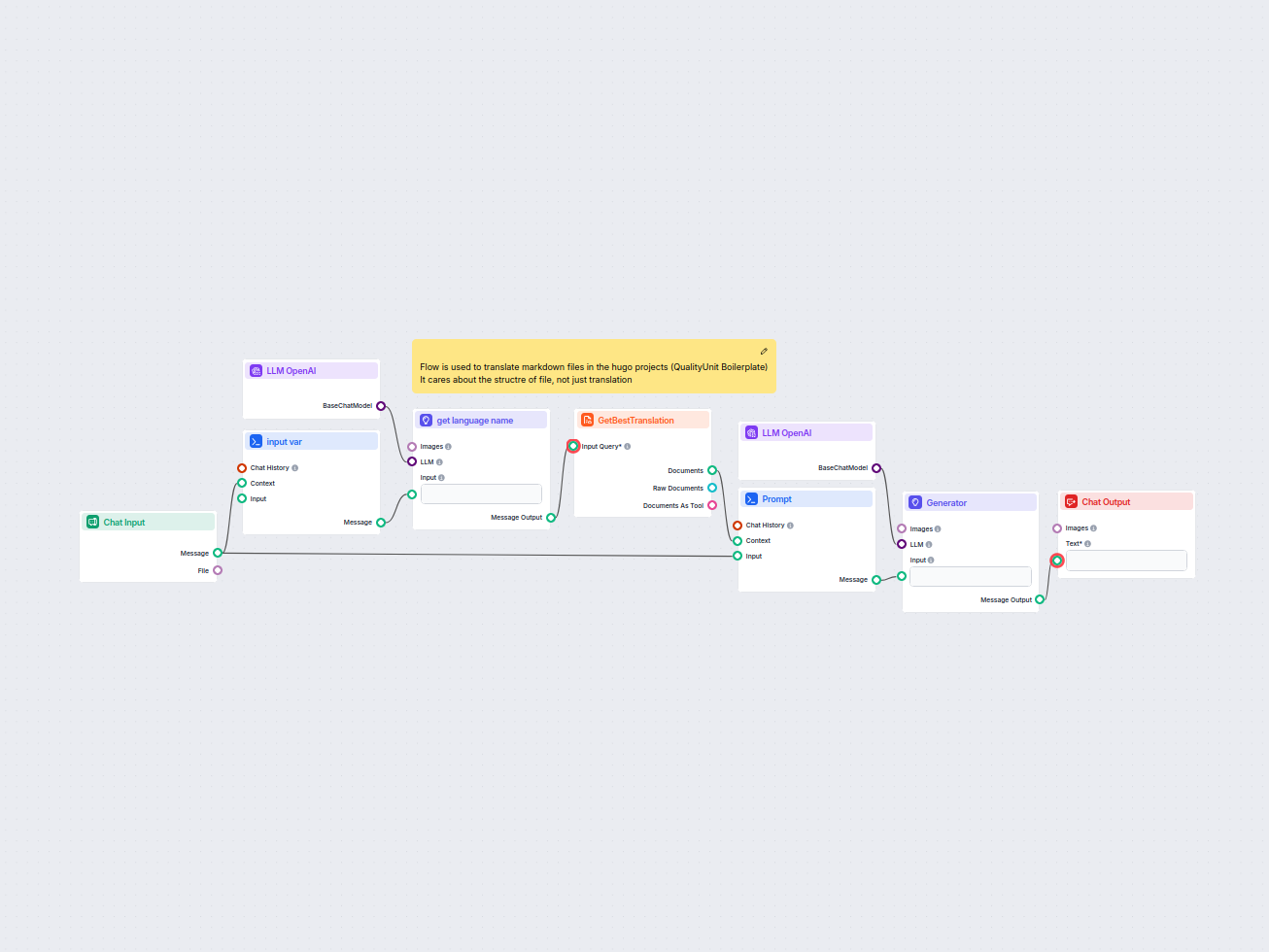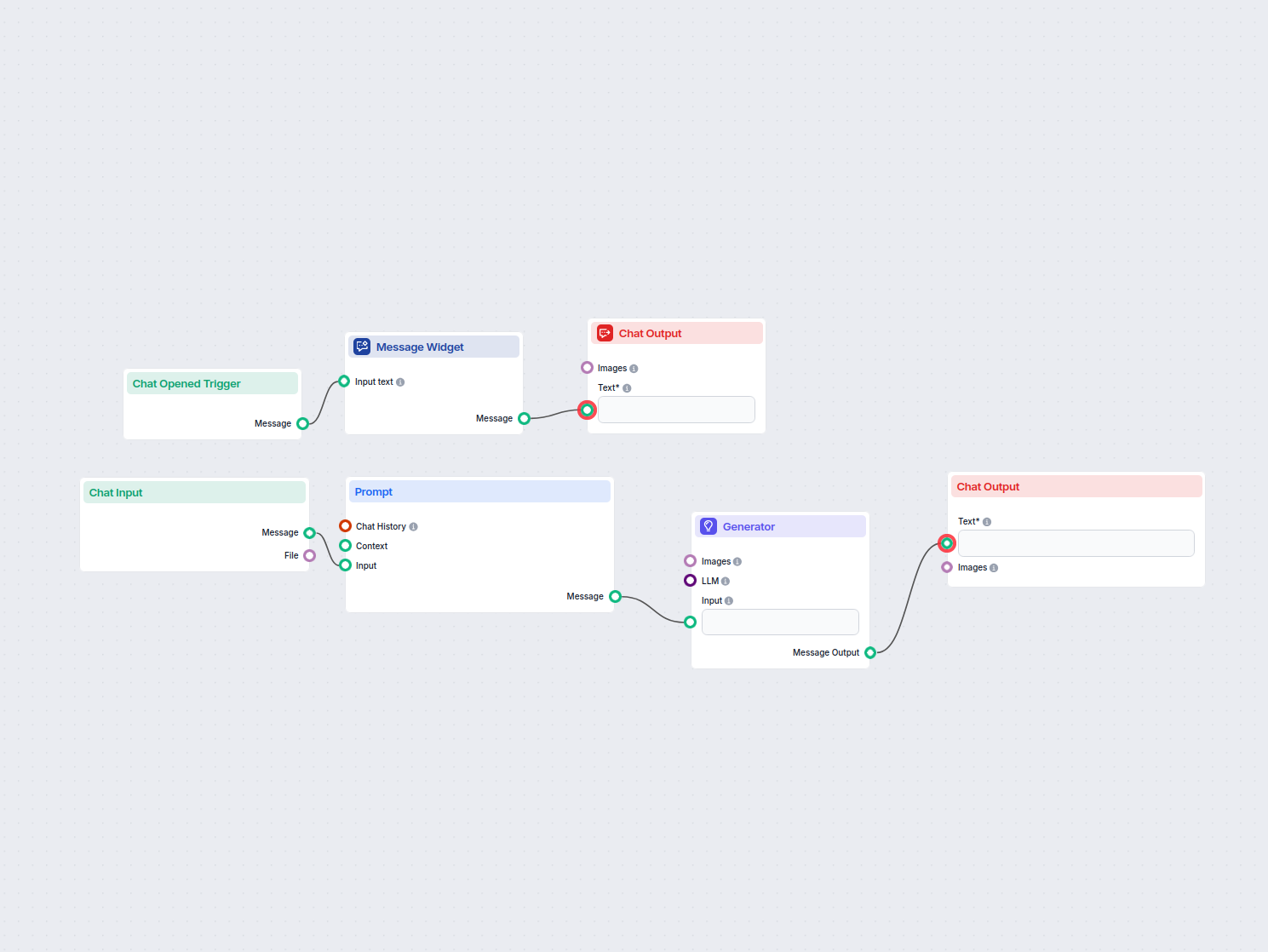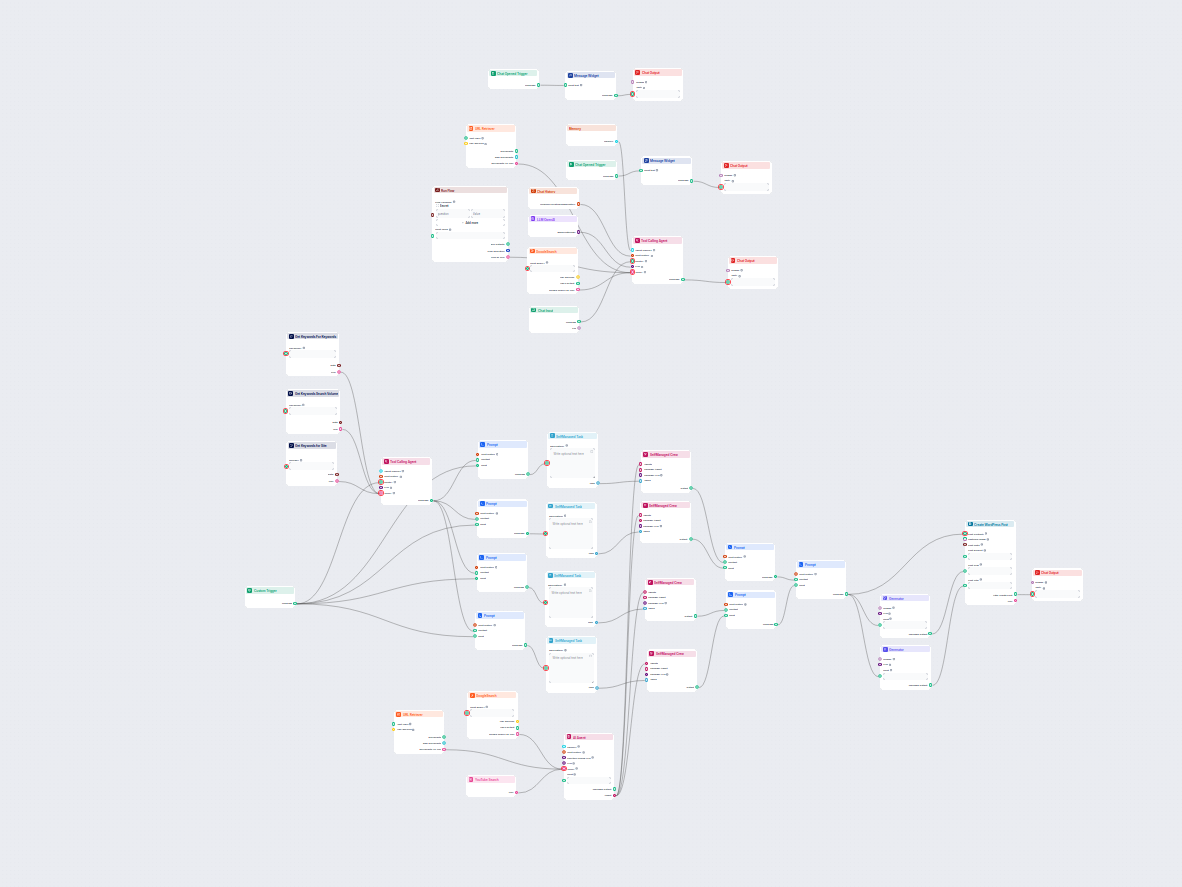Prompt
Create a prompt template with dynamic variables ({input}, {human_input}, {context}, {chat_history}, {system_message}).
Translate web content between languages while preserving HTML structure, using AI and UrlsLab plugin. Email addresses and URLs remain unchanged, ensuring accurate, context-aware translations for multilingual websites or content teams.

Flows
Create a prompt template with dynamic variables ({input}, {human_input}, {context}, {chat_history}, {system_message}).
Below is a complete list of all components used in this flow to achieve its functionality. Components are the building blocks of every AI Flow. They allow you to create complex interactions and automate tasks by connecting various functionalities. Each component serves a specific purpose, such as handling user input, processing data, or integrating with external services.
The Chat Input component in FlowHunt initiates user interactions by capturing messages from the Playground. It serves as the starting point for flows, enabling the workflow to process both text and file-based inputs.
Learn how FlowHunt's Prompt component lets you define your AI bot’s role and behavior, ensuring relevant, personalized responses. Customize prompts and templates for effective, context-aware chatbot flows.
Explore the Generator component in FlowHunt—powerful AI-driven text generation using your chosen LLM model. Effortlessly create dynamic chatbot responses by combining prompts, optional system instructions, and even images as input, making it a core tool for building intelligent, conversational workflows.
Discover the Chat Output component in FlowHunt—finalize chatbot responses with flexible, multi-part outputs. Essential for seamless flow completion and creating advanced, interactive AI chatbots.
Flow description
This workflow automates the process of translating text between languages while preserving the original HTML structure, making it ideal for translating web content, emails, or any structured text where format integrity is crucial. It’s especially useful for professionals, webmasters, and content teams who need to localize web pages or documents at scale, ensuring URLs and email addresses remain unchanged and the output is clean and ready for use.
| Step | Component | Functionality |
|---|---|---|
| 1 | Chat Input | User provides the text to translate, along with source and target languages. |
| 2 | Prompt Template | The workflow creates a dynamic prompt using the input and language parameters, instructing the LLM on the task. |
| 3 | Generator (LLM) | The prompt is processed by a Language Model, which performs the translation according to the strict rules. |
| 4 | Chat Output | The translated message is displayed to the user, ready for use or further integration. |
In summary, this workflow brings together translation accuracy, structural preservation, and automation, making it an essential tool for anyone needing reliable, scalable, and integration-friendly language translation—especially for web content.
We help companies like yours to develop smart chatbots, MCP Servers, AI tools or other types of AI automation to replace human in repetitive tasks in your organization.
This workflow streamlines the translation of HUGO markdown files into target languages while preserving file structure and formatting. Leveraging AI language mo...
This workflow allows users to instantly translate any input text into English using AI. Users enter or upload text, which is then processed and translated with ...
This AI-powered workflow automates the generation of unique legal or professional blog questions based on user input, competitor research, or trending topics, a...
Cookie Consent
We use cookies to enhance your browsing experience and analyze our traffic. See our privacy policy.



